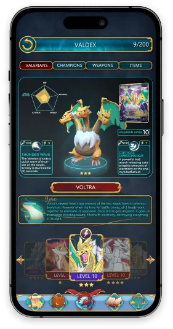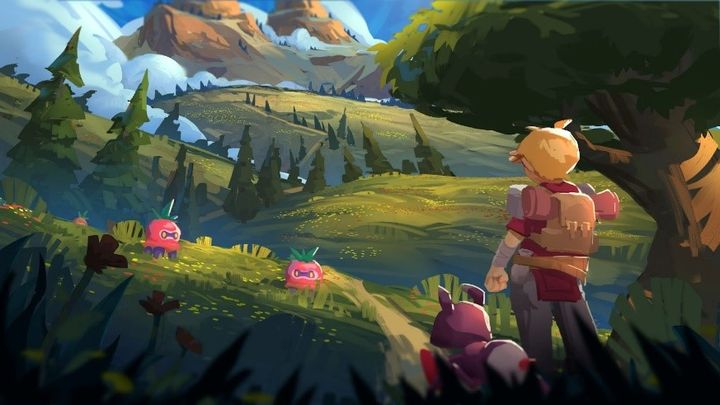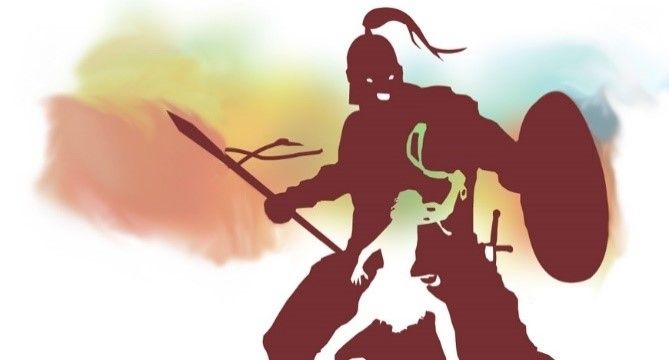There’s been a lot of recent hype surrounding the upcoming launch of Valeria Games, so no better time than now to take a closer look and see if the game might be able to live up to its expectations. Read on for what I’m excited about but more importantly some question marks to consider for those thinking of jumping into the Valeria crypto / NFT ecosystem.

Brief Game Overview & Positives
For those unfamiliar, at a high level Valeria Games is a free-to-play, real-time strategy-based RPG built on Polygon. The game has elements of Pokémon with collect/train/evolve/battle components all centered around creatures called Valerians.
There are 150 different first-generation Valerians, each with its own unique stats, moves and elemental category (e.g., fire, electric, water, grass, etc.). Gameplay is largely card-based with a rotating deck of unique cards for each player in battle, and players choose their team of Valeria in addition to which items, weapons and champions (which are like PFP trainers) to use before entering the fray. For more detail you can check out the game’s whitepaper.
Mobile / Free-to-Play
Of particular note, Valeria Games is mobile-first and set to be released on iOS and Android by end of year. Mobile gaming is big business. In 2022 mobile was bigger than console and all other gaming formats combined, representing about 50% of all gaming revenue (over $90 billion). To tap into this market from the start is an advantage and it’s one of the reasons why games like Axie Infinity were able to gain the huge, international following that it did. Being free-to-play also helps and removes a barrier which might otherwise impede user growth which is key at this stage.

First Mover
2023 was heralded as the year we’d start to see quality, AAA blockchain games come to market after seeing what might be possible from early pioneers like Axie. Development takes time, and we are just starting to see a few quality titles like Illuvium making strides toward full release after numerous private betas.
With Valeria Games targeting a release in 2023, this sets them up well to ride the Web3 gaming meta that is likely to come over the next year or two. Sometimes being first is better than being best. With some gameplay leaks already on display (more on the website’s homepage), Valeria looks on target to soon provide a quality Web3 game for the masses and may potentially stand as one of the early first movers going forward.
Question Marks
Now for a few important considerations before rushing into Valeria’s crypto ecosystem.
Tokenomics
Tokenomics is one of the biggest gray areas I see right now. In the end tokenomics won’t ultimately decide whether the game succeeds since the game was never intended to be P2E (it’s “play-AND-own” with crypto/NFTs as an ancillary component), but for the Web3 / crypto crowd, it’s something to take note of before purchasing a Genesis Land NFT or $VAL. Let’s explore deeper.
In-Game Currencies. There will be three in-game currencies. One is called “gold,” which the whitepaper says can be earned through gameplay and used to progress and evolve NFTs. No additional information is provided, except that the daily amount of gold awarded is calibrated to provide a satisfying rate of progression for players who choose not to spend money in-game.
The other two currencies are called VAL and xVAL. These are meant to “accelerate progress,” but how they exactly differ from gold is unclear. My understanding is that gold is the main in-game currency used, whereas VAL/xVAL can be used for all the same purposes in addition to potentially expediting game progress and/or providing other special unlocks (e.g., minimizing wait times for opening loot boxes, etc.). Clearer documentation would be helpful.
xVAL has a fixed $1 USD value so it’s not a cryptocurrency per se. As such it’s intended for non-crypto natives and can be purchased directly in the in-game store (like how gems are purchased in Clash of Clans, etc.). VAL has the same function as xVAL but is distributed across the ecosystem differently and is not directly purchased (it’s a standard, freely tradable utility token). To earn VAL, you must purchase and stake a Genesis Land NFT — 35% of all VAL will be distributed to land owners over a two-year period.
Using VAL for in-game purchases offers a 50% discount compared to xVAL, no matter what the floating price of VAL is. So, if a marketplace item costs $10, this would cost 10 xVAL ($1 per xVAL) or $5 worth of VAL (so if VAL is trading at $20, this would cost 0.25 VAL). This discount makes VAL a more appealing option compared to xVAL no matter VAL’s price, incentivizing the purchase of Genesis Land NFTs (which yields VAL) and creating a positive feedback loop.
Token Distribution. For gold, no specific detail is provided on distribution, so infinite supply is assumed. To expect a long-term price trajectory other than that of tokens like $SLP (Axie’s in-game token) is therefore wishful thinking. Again, P2E is not the focus so even if this prediction plays out it shouldn’t necessarily affect the appeal of the game, but for the crypto audience out there I wouldn’t be surprised if gold launches without a liquidity pool and soon commands little to no value aside from maybe a very brief pump on a random surge of popularity (so overall not much different than a non-crypto gaming currency). To structure a stable in-game token is a massive undertaking that no Web3 game has been able to accomplish to date, and with very little detail on Valeria’s plans for gold, I doubt this will be the one.
With respect to VAL, see below for the token’s planned distribution from the whitepaper. Note that the team has since revised the below so that Genesis Land staking rewards comprise 35% (87.5 million tokens), with 5% distributed over the first 9 weeks of staking and the other 30% within the next two years (released gradually).

Since xVAL is pegged to the USD, there is no distribution schedule for it. Whenever any xVAL is purchased from the in-game store, a corresponding amount is sent to that player’s account.
Verdict. It’s been said a thousand times — for a Web3 game to succeed, it needs to be fun first, crypto second. With these tokenomics, I’m not sure Valeria has any other choice as there is not much documented structure to provide support for the token’s price.
For example, currently the only use for VAL is for in-game purchases and progression. However, it seems players can do without VAL altogether just by earning gold in-game or purchasing xVAL. How this interrelationship between tokens will affect demand for VAL is unclear.
Aside from VAL’s in-game uses mentioned prior, the team has also not mentioned any other token sinks such as LP staking, governance or whatnot to provide price support. Whether pure in-game demand for VAL can outweigh sell pressure from Genesis Land NFT holders expecting return from their land purchases is a big question, particularly since players can advance in the game without VAL as noted before.
The amount of foreseeable dilution is also worrisome. 65% of VAL distribution is not in circulation and set aside for special events, the team and treasury. The latter comprises 50% of VAL’s supply “to support the expansion and growth of the Valeria Games ecosystem.” For how large of an allocation this is the vague detail is a bit concerning. The good part here is that upon launch, only a very small portion of VAL will be in circulation since the 35% from Genesis Land NFT staking distributes over a two-year period and there’s no tokens owed to any VC or presale investors who might dump upon vesting. This set up could lead to an early speculative surge in price.
However, as structured I can’t say that I see a clear path for any of Valeria’s in-game tokens to command anything more than nominal value long term unless the game turns into a phenomenon (low odds for any game). User growth and retention will therefore need to come from actual gameplay and rely less on the appeal of any earning component, making the storyline and in-game player modes even more pivotal to Valeria’s success.
Genesis Land NFTs
Since 35% of VAL’s token supply is set aside as staking rewards for Genesis Land NFT holders, the demand for Genesis Land NFTs is highly dependent on VAL’s appeal. As such, unless holders get a lot of utility from using VAL in-game or are attracted to the weekly Valerian NFT booster packs that holders also receive from staking, expectations might not meet reality.
Over the past couple months (May-August 2023) the price of Genesis Land NFTs has ranged from 0.2–0.4 ETH ($400-$800) on OpenSea. The sole utility of owning land right now is the 35% VAL distributed to holders, in addition to a right to receive a share of excess tokens acquired by the team through in-game transactions like store purchases, tournament fees, etc. Not much additional detail is provided on the latter, so it’s hard to give much weight. The land doesn’t otherwise have any gameplay utility like found in some other metaverses / games — for now it’s purely about VAL token rewards.
As such, I view land here less as buying into a metaverse as some have labeled Valeria, and more like a booster pack for those interested in playing the game. There’s nothing wrong with this, but investors should be aware.

Evolution Lines / Burning / Gameplay Structure
The concern here is whether in-game progression is structured too confusingly for newcomers and passive gamers, which might serve as an obstacle for user growth. Games like Pokémon were so universal in part because of their simplicity — e.g., battle, gain experience points for wins and level up. That’s not the case here.
For example, each Valerian NFT ranges from levels 1 to 10 depending on experience. In order to level up any of these Valerians though, it requires players to burn numerous Valerian NFTs of the same type and level. It’s a bit confusing how the whitepaper describes the structure, but apparently to reach level 10, nearly 20,000 NFTs need to be burned which is supposed to help with the long-term sustainability of the ecosystem by being deflationary. Below is a visual on the burning mechanics.

However, since this is a strategy RPG, there’s a chance the target audience won’t be intimidated by the construct and might actually enjoy getting into the specifics like the below analysis of which element types are more or less effective against others.

Card-based games like Splinterlands have also come before and done very well — in 2022, the game was one of the most popular Web3 games with on average ~235,000 daily unique active wallets (dUAW). If expecting Valeria to go beyond and be one of the first titles to bring Web3 gaming to the broader masses though, it might be too high of expectations for a game that doesn’t seem to differentiate itself entirely.
Final Thoughts
It’s still so early in the Web3 gaming space, and far too soon to say which game models will ultimately prevail as winners and why. As the space matures though, I think it’s starting to become clear that the vast majority of games built solely on the prospect and appeal of Web3 integration will fade.
After review, I’m not so sure Valeria Games can avoid this fate. Its tokenomics are not very thought out and likely unsustainable, and the NFT structure is confusing to say the least. There’s a chance the game itself is a lot of fun and the Web3 component won’t matter as much as a result, but for those who invested this is little reprieve.





Comments ()